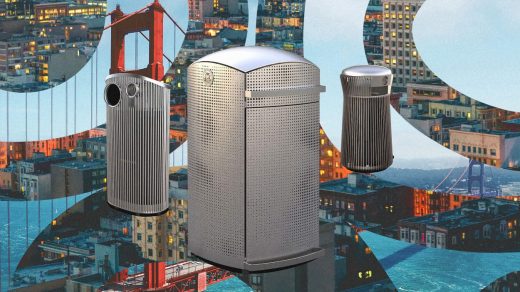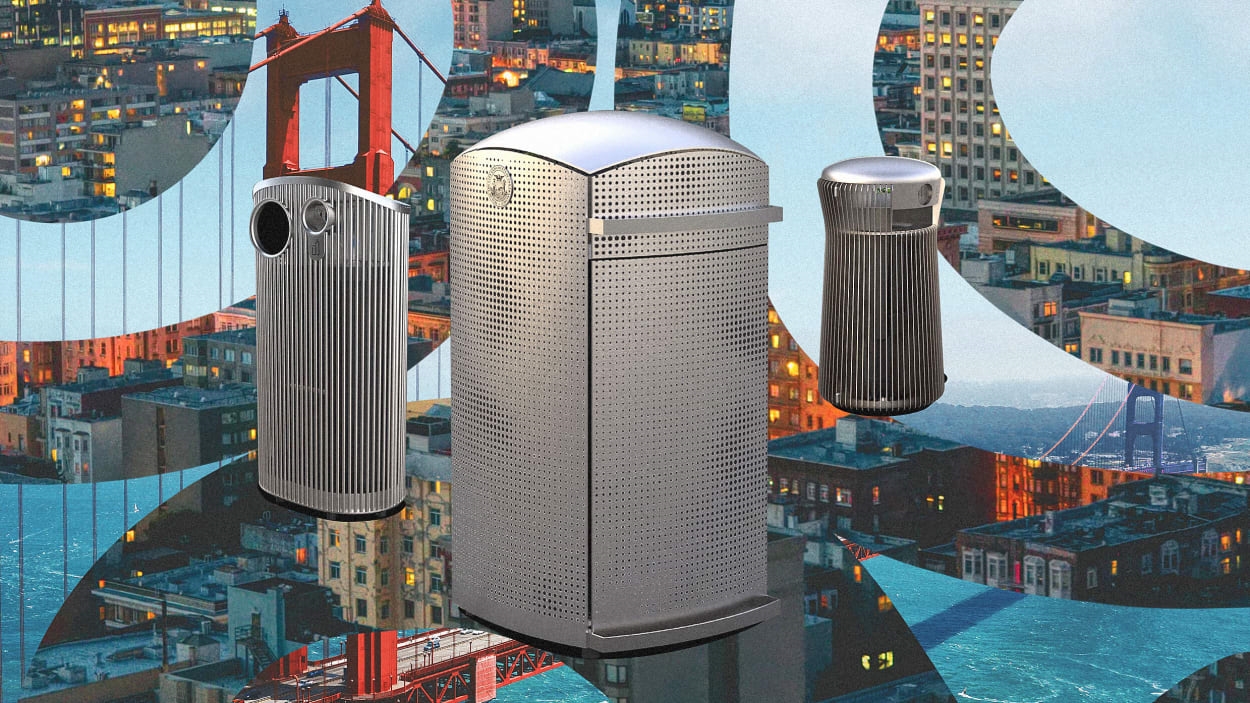The city of San Francisco couldn’t find a good trash can for its streets. So it designed its own
The perfect garbage can is surprisingly hard to find, and Beth Rubenstein has spent a lot of time looking. As deputy director of policy and communications for the city of San Francisco’s Department of Public Works, she’s been trying to find a good trash can to replace the city’s aging inventory of more than 3,000 sidewalk garbage receptacles. But not just any can will do. To withstand the hard life of a city trash can—vandalism, rummaging, repeated unloading, jammed holes, and rusted hinges—the ideal replacement would need to hit a range of requirements. The ideal replacement, Rubenstein realized, did not exist. “We didn’t find an off-the-shelf can that addressed all those criteria,” she says.
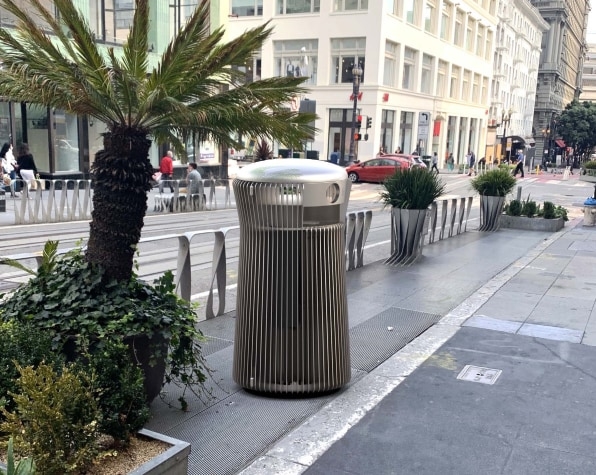
So the city set out to design a better solution. In consultation with various city departments, the city’s contracted garbage hauler, and industrial design firm the Institute for Creative Integration, the city has unveiled three prototype designs for a new city trash can. They balance ease of use, ease of unloading, durability of locks and hinges, and an integrated system for automatically detecting when they’re getting full. With an estimated per-can production cost of between $2,000 and $3,000, the three prototypes may be as close to perfect as San Francisco can get.
Now, the city’s Department of Public Works has just started a 60-day trial period to field test 15 of these custom trash cans, which each has the same 32-gallon capacity as the city’s existing garbage cans. A few off-the-shelf options are also being evaluated, including one basic mesh-cage design that retails for $700 and a mailbox-style alternative that costs more than $3,000.
The cost of the proposed trash cans has rankled some, especially those noting that the price tag for producing one of the bespoke prototype models was more than $20,000. Rubenstein says this won’t be the final cost of mass-producing the new cans, and the off-the-shelf options were included in the evaluation to give locals at least some cheaper alternatives. “The public wants to have proof that it’s necessary to spend that money, which is thoroughly understandable,” Rubenstein says.
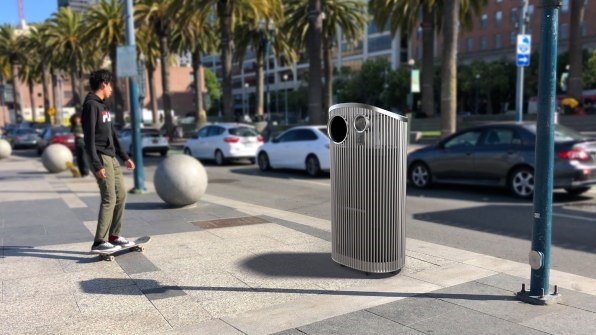
The city is hoping to collect public feedback on their usability, design, and trash-collecting prowess. In addition to the regular complaints and feedback the public already submits via email and the city’s 311 app, the pilot trash cans also have QR codes that link to a detailed survey, available in five languages. “I think we’ll get a lot of feedback on how they’re functioning on the street,” Rubenstein says.
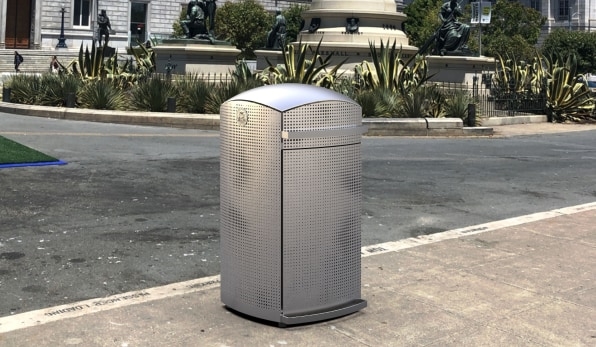
The pilot project is about more than functionality, though. There are more than 3,000 city trash cans spread across San Francisco, and Rubenstein says they’re inevitably part of the way the city presents itself to the public. “So they have to look good,” she says. “We have to have them fully functional, but they also have to be a visual asset on the street.”
Whittled down from 15 concepts presented by the designers at the Institute for Creative Integration, the three new designs could almost be called sleek. There’s the Salt & Pepper, a slightly tapered cylinder, reminiscent of a diner salt shaker, with ribbed steel fins around its perimeter; a compact rectangular slit for tossing trash; and a round hole at the top for recyclables. Then there’s Slim Silhouette, an oval-like shape reminiscent of a deodorant stick, with a large round hole for trash that snorkles down into the can to prevent rummaging, and a smaller hole leading to a recyclables area. The third design is named Soft Square, for its four-sided shape, rounded top to prevent stacking of garbage, and mailbox-like hopper drawer that opens either with a handle or a foot pedal. Each design is equipped to handle a rolling can inside, making them easier to unload, and space for the sensor to monitor trash levels.
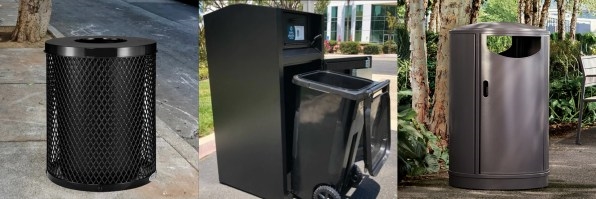
The off-the-shelf options include the conventional open-top mesh basket, a rectangular bin with two large openings on either side, and a sturdy box modeled after the bear-resistant trash cans of national parks and campsites.
Rubenstein says the evaluation process may end up favoring one design over the others, or lead to a new design that combines elements from two or more. A too-small hole in one design may lead to items like pizza boxes being dumped alongside. A too-big hole may lead to rummaging issues. A closed-drawer design may deter people who don’t want to touch the handle, while a foot-pedal mechanism might be harder to maintain over the can’s lifetime, which could be 15 to 20 years. “We’re working out the issues before it gets to mass production,” Rubenstein says.
She’s hopeful that the public-engagement process will not only get the public to support what could add up to a $9 million investment in thousands of trash cans, but will also help create a trash can design that better meets the needs of complex urban environments.
“I don’t know of any other city that has done this in such depth,” Rubenstein says. “I’m guessing that the information that we learn can be used by other municipalities.”
The first phase of testing began July 18, and the evaluation period ends mid-September. Rubenstein says that after about a month of analyzing the data and making public presentations, the department could nail down a selected design by the end of the year. A request for proposals to mass-produce San Francisco’s next generation trash can will likely go out in 2023, and the new cans could be on the ground not long after.
(15)

